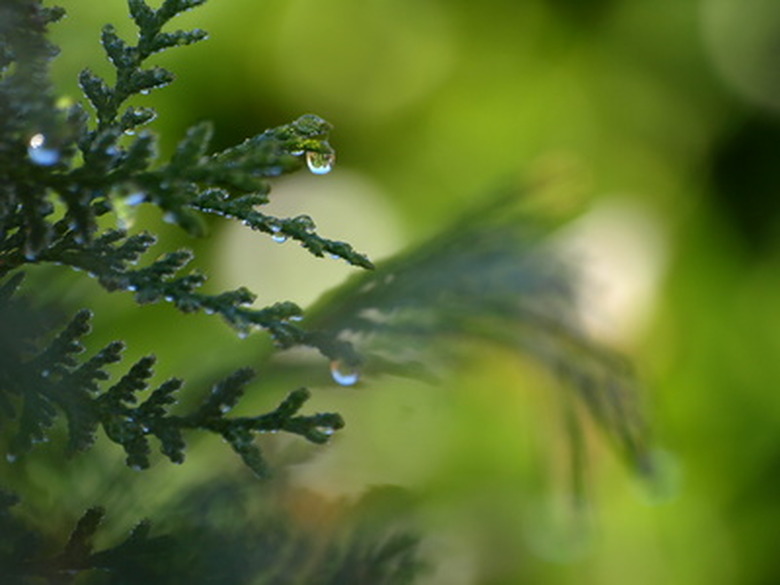Causes Of Emerald Green Arborvitae Turning Brown
Emerald Green Arborvitae is a cultivar of Thuja occidentalis and is an evergreen tree or large shrub. It is prized for its rich green year-round color, upright growth habit and hard-wearing, low maintenance nature. Brown foliage can be caused by a number of factors nearly all coming from environmental stress. Evergreen foliage cannot be returned to green once it turns brown and is slow to regrow so prevention of the spread is important to preserve the shape and appearance of the tree.
Drought Stress
Arborvitae requires evenly moist and rich soil. When it is starved of irrigation or rainfall, browning is a likely consequence. Arborvitae also prefers moist air, so when the roots are stressed for water and the ambient humidity is low, the odds of the foliage turning brown are increased. Supplement natural rainfall with occasional deep watering so that the soil remains moist but not soaking wet.
- Emerald Green Arborvitae is a cultivar of Thuja occidentalis and is an evergreen tree or large shrub.
- Evergreen foliage cannot be returned to green once it turns brown and is slow to regrow so prevention of the spread is important to preserve the shape and appearance of the tree.
Freeze and Thaw Cycles
During winter and early spring when the soil is frozen but ambient temperatures rise, arborvitae can suffer stress and tissue death because the roots are essentially frozen while the top-side foliage of the is being exposed to warm temperatures, sun and cannot take up moisture from the roots to replace what is being used in photosynthesis and lost via transpiration and evaporation. This is particularly damaging when it occurs repeatedly. Brown damaged portions can be removed but severely damaged trees with significant dead wood will need to be replaced.
Damaged Branches and Foliage
Branches and leaf twigs can be bent or broken from the branch or trunk causing stress, browning and tissue death. When brown color is localized in one or two spots on the tree, this is often the case and the damage can simply be pruned away down to healthy tissue making way for new green growth.
Disease and Insect Damage
Root rot due to standing water in the soil or boring insects can each disrupt the internal flow of water and nutrients through the tree system. This causes tissue distress or death which often manifests itself in part, by brown foliage. Check the soil for water saturation and root integrity and correct watering or drainage if necessary. Inspect the trunk and limbs for evidence of boring insect activity such as small holes and fine sawdust particles.
- During winter and early spring when the soil is frozen but ambient temperatures rise, arborvitae can suffer stress and tissue death because the roots are essentially frozen while the top-side foliage of the is being exposed to warm temperatures, sun and cannot take up moisture from the roots to replace what is being used in photosynthesis and lost via transpiration and evaporation.
- When brown color is localized in one or two spots on the tree, this is often the case and the damage can simply be pruned away down to healthy tissue making way for new green growth.
Fertilizer Burn
Excessive amounts of fast-release nitrogen fertilizer can cause burn to the roots of evergreens causing some root tissue death which can result in browning of top growth. While this is unlikely to cause an entire arborvitae to turn brown, it can account for patches or partial browning depending on severity of over-application.
